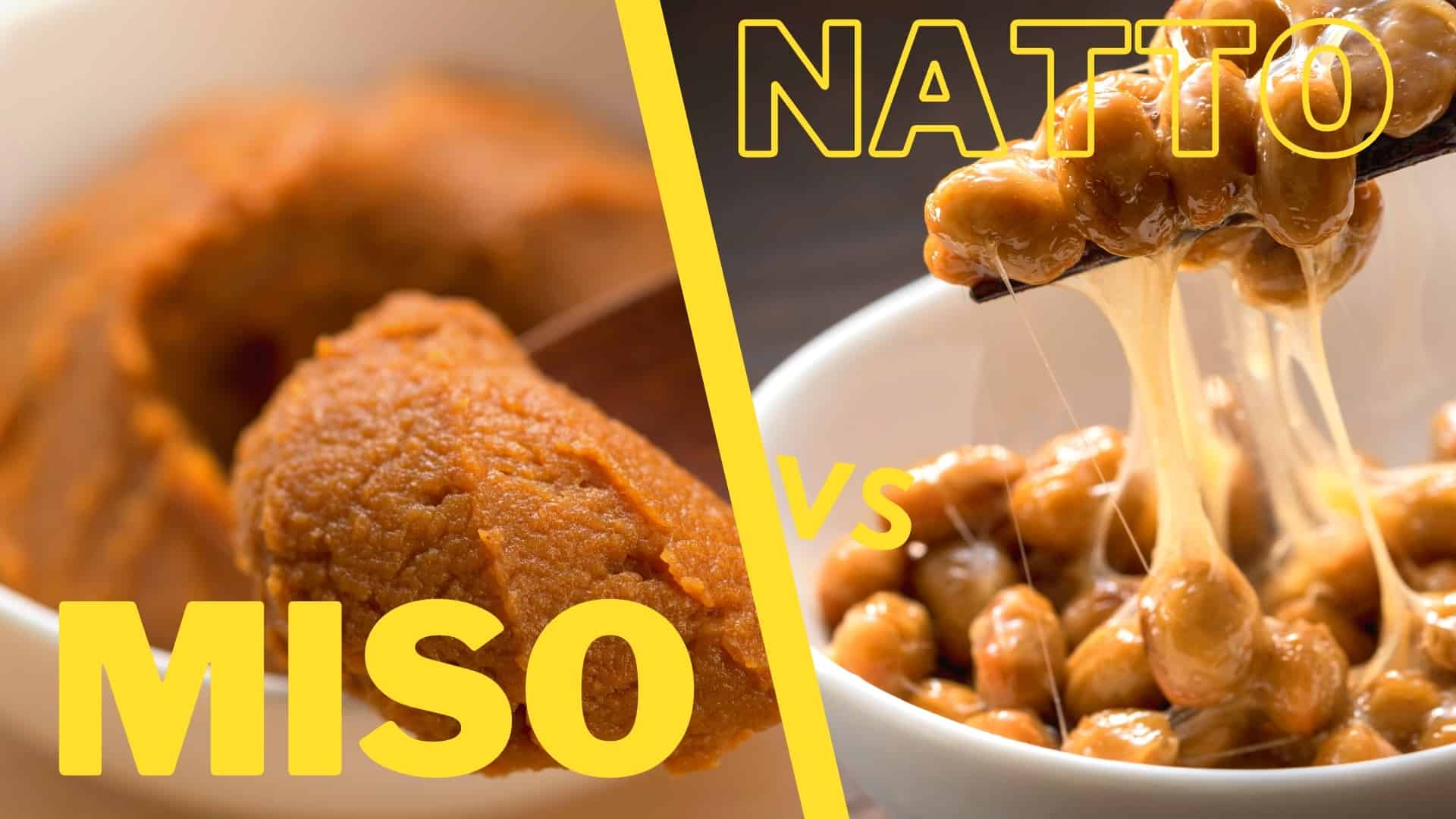Miso vs natto | Differences in nutrition & popular dishes for both
There’s no doubt the Japanese are big on fermented soybean products, especially their flagship miso, popularly known as the base of ramen soup. But there’s also natto. How do these differ?
The main difference is that natto is fermented whole soybeans, while miso is fermented soybean made into a paste. But other differences, such as the type of bacteria used in the fermentation process lead to almost opposing flavor profiles.
Read on to find out the differences between miso and natto and how you can add them to your meals.

Natto is another soybean product that’s enjoyed in Japanese cuisine. It’s often eaten for breakfast and is known for the health benefits it can provide.

Check out our new cookbook
Bitemybun's family recipes with complete meal planner and recipe guide.
Try it out for free with Kindle Unlimited:
Read for freeIn this post we'll cover:
What is natto?
Natto is a traditional Japanese food; more of a whole side dish really. It’s made by fermenting soybeans with Bacillus subtilis.
You can find it as a side dish, being served for breakfast alongside mustard, as a soy sauce or perhaps tare sauce, and on some occasions, with a bit of bunching onion.
Other options for eating natto include combining it into foods like natto toast, natto sushi, tamagoyaki, or salad. It can be used as an ingredient in okonomiyaki, chahan, and even spaghetti!
The dish is known to have a distinctive odor and is considered an acquired taste since it has a pungent smell. Many compare the smell to that of aged cheese.
While some consider it unpleasant to eat, others consider it a delicacy.
What is miso?
Miso is made from soybeans fermented with Aspergillus oryzae. The soybeans are combined with salt and koji and sometimes, rice and barley are added.
It’s most commonly mixed with dashi to make miso soup. But it’s also used in its natural paste form to be added to dips, dressings, and marinades.
Most enjoy miso’s umami taste!
If a recipe calls for miso, but you just ran out, here are 5 miso paste substitute options you could add to your dish instead.
Miso vs. natto: Nutrition
Both miso and natto are fermented foods, so they work as probiotics to boost gut health. Because they’re soy-based, they’re rich in protein, fiber, and unsaturated fats.
Soy has also been known to lower cholesterol and reduce the risk of heart disease.
Both products have been looked at for their potential to increase longevity.
Natto is particularly effective in lowering the risk of cardiovascular disease. It’s full of vitamins and minerals like fiber, manganese, vitamin K2, iron, magnesium, copper, vitamin C, and more. It’s antioxidant-rich and has shown to be effective in boosting the immune system.
Miso has its share of vitamins and minerals as well. It has high levels of B vitamins, vitamin K2, copper, manganese, iron, and zinc. It’s been shown to strengthen the immune system and it may also be effective in reducing the risk of certain types of cancers.
Natto dishes
Natto is commonly served as a breakfast food over steamed rice. Much like more pungent oatmeal, you can add any sort of ingredients to the dish, including egg, soy sauce, seaweed, and more.
You can also add it to soup or try it on top of a pizza!
Miso dishes
Miso is commonly combined with dashi to make soup, but there are so many other things you can do with it.
Here are some examples:
- Miso chocolate hazelnut rugelach bars: This recipe involves transforming rugelach into cookies with a miso-Nutella filling sandwiched between layers of a cream cheese dough.
- Miso-scented portobello: This meatless steak tastes great with a miso marinade. Serve it with crispy shallots and a side of garlicky mashed cauliflower and you’ve achieved perfection!
- Shrimp and corn tamales with miso butter: The combination of citrus shrimp and miso gives you an authentic Asian flavor that’s nicely complemented by Southwest tamales.
Enjoy miso and natto
Natto and miso are 2 completely different foods. But their soybean base gives them similar nutritional profiles that can boost your wellness!
How will you be incorporating them into your recipes?
Miso is sometimes also confused with soy sauce. They’re not the same! Read about all the differences between miso and soy sauce here.
Check out our new cookbook
Bitemybun's family recipes with complete meal planner and recipe guide.
Try it out for free with Kindle Unlimited:
Read for freeJoost Nusselder, the founder of Bite My Bun is a content marketer, dad and loves trying out new food with Japanese food at the heart of his passion, and together with his team he's been creating in-depth blog articles since 2016 to help loyal readers with recipes and cooking tips.

